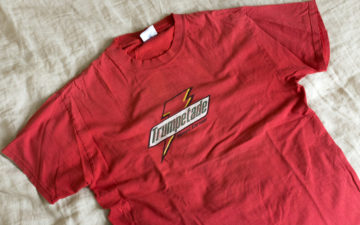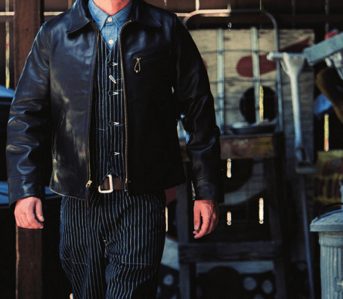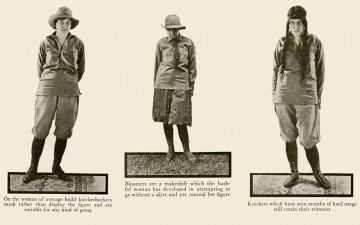Growing up through the early 2000’s shaped my fashion sense in a unique way. Through my teenage years I found myself deeply immersed in the punk rock and skateboarding scenes. As many of you know, both of these cultures have been historically intertwined. Their ethos of going against the grain, doing things yourself, and wearing unique fashions have become almost synonymous with each other.
Perhaps one of the most staple pieces between both cultures are denim jeans. Faded, torn and deconstructed jeans served as a signal that you did not live life in the green. They were and still are a testament to living life to its fullest potential. Case in point – the Ramones. They were famously known for wearing their jeans until they literally fell apart.

Punk rock pioneers, The Ramones, in their signature leather jackets and denim
As I discovered the culture behind raw denim, I learned about the idea of wearing a garment that told a story through its signs of wear. Immediately after being gifted my first pair, I took to the internet to learn about raw denim and how I should care for it etc. Many of the links led me to this very site, Heddels, which turned out to be pretty knowledgeable about the raw denim space and provided fuel to my interest and knowledge base.
There was one question that had always been nagging me though. How did the raw and selvedge denim become so popular? I know that unwashed denim used be the standard and the market later strayed towards pre-distress and mass cutting, but how was it decided that raw denim was once again “in vogue” and fashionable?
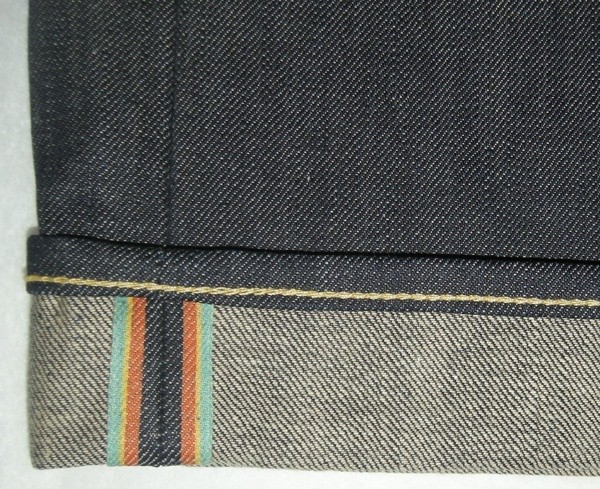
While this article is rather exhaustive, the aim is to delve into this pressing question and pick the brains of some of today’s producers of raw denim.
The 90’s and early 2000’s were an interesting time for fashion. Buying jeans pre-distressed and ripped seemed to be the cool thing to do for a while, but from about 2005 onwards, dark wash and raw denim has surged in popularity. A number of brands – such as Levi’s, A.P.C., Samurai, and Evisu – seem to have resurrected raw and selvedge denim from near extinction.
Interesting, but how and why did select consumers suddenly turn their attention to raw and selvedge denim? Was it the level of care and craftsmanship put in to making the garments? Perhaps it was the mentality of having a “historic” or “authentic” ethos behind the garment, or maybe it was even the DIY approach of creating your own fades and distress patterns.
I’m sure that the motivation for consumers could be one, all, or even none of these reasons. How did you yourself get into raw denim?
A State of the Union – Where We Are
The raw denim scene at this time is a special hybrid of aesthetic and ideals. It currently stands at a crossroads where modern meets traditional and where basic meets the outrageous and revolutionary. The 800 lb. gorilla names such as Levi’s been joined by heavy-hitting newcomers like Nudie, Naked and Famous and Baldwin Denim. Smaller brands – including Tellason, Ande Whall, Roy, Rogue Territory, and Left Field NYC – have also begun to gain popularity and build a strong reputation around their collections.
Alongside the joining of new and old school brands, we have also seen the same marriage of modern and traditional sensibilities in terms of fit and construction techniques. Brands are producing heritage pieces that harken back to the days when denim was worn purely as work wear with fits that emulate the originals, hence their birth of vintage labels such as Levi’s LVC and Lee’s Vintage Collections).
Some companies, such as Samurai, take the approach of constructing denim in a historical way on vintage looms; enabling a more unique slubby feel to each pair produced while making the jean in more modern fits such as slim and skinny. Other players, like Naked and Famous, bring raw denim completely into the modern era. State of the art-constructed Japanese selvedge denim is utilized with modern fits and combined occasionally with unorthodox treatments like glow-in-the-dark or rainbow core thread.
While all of this denim proliferation is well and good, we find ourselves confronted with perhaps the most difficult characteristic of the internet age. The internet has completely democratized the process of distribution so that anyone with an idea and clever marketing plan may bring their product to the masses. The barriers of entry have been undoubtedly lowered, thus opening the proverbial floodgates to lead to an even further boost of brands, perhaps to the point of product saturation.
This saturation and ease of distribution certainly comes with both upsides and downsides. For starters, raw denim enthusiasts have never had such an immense number and diverse range of options to choose from. With so many other companies offering a niche product as well, the increased competition should theoretically push brands to differentiate and create more unique and better products.
Unfortunately, quality does not always correlate with quantity. End-consumers have been forced to develop a filter in order to sift through the noise and determine which product is actually better. Seems easy enough but this task is even more difficult – and necessary – as so much commerce is now conducted online.
Usually individuals tend to stick to larger brands known for their quality, while occasionally trying out some smaller brands that have gained notoriety through word-of-mouth. This also means that some brands who are able to market well can move product that may not be as high quality as another brand with higher quality goods without a honed marketing approach.
Despite the strong presence the internet has in selling raw and selvedge denim there are still many brick-and-mortar stores that sell quality garments. Self Edge, Blue in Green, and Tenue de Nimes are three such purveyors that have all made names for themselves through melding their online and offline retail approaches. Each offer (and curate) quality and rare products while providing exceptional knowledge and customer services through their storefronts and online portals.
While this is one perspective on the current denim scene, we now turn to three makers for their thoughts and insights on the industry – Zack Meyers of Zace Meyers Overall Co., Christian McCann of Left Field NYC, and Brandon Svarc of Naked and Famous.
Zach Meyers of The Great Zace Meyers Overall Co.
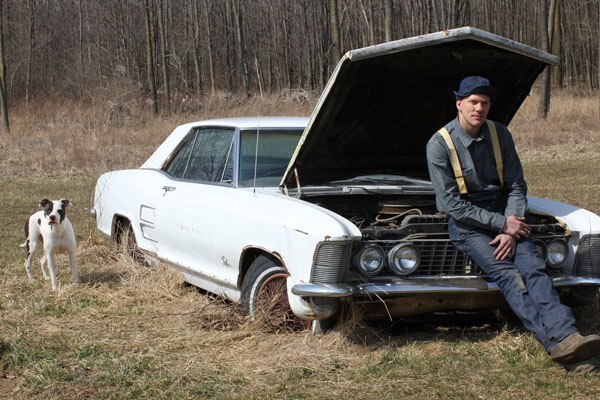
Zachary Meyers of The Great Zace Overall Co.
The current state of of the industry is better than ever! It would appear as if there’s a current resurgence in the artisan community of craftsmen and craftswomen. I remember ten years ago when I personally started making selvedge jeans in Ohio and people thought I was crazy for my belief in American made and the sacrifices I made to accomplish such a goal.
No matter how many people buy a sewing machine to make a pair of jeans, the fact of the matter is, who will have the ability to produce a premium jean at an affordable price and make a bunch to fuel the demand? It’s awesome to see so many people attempting to make jeans and also to see the denim scene essentially demanding American Made. The future looks bright!
Christian McCann of Left Field NYC

Christian McCan of Left Field NYC
It’s good that we have a lot more options for Made-in-America denim, but it would be nice if newer brands tried to differentiate themselves from what’s already out there either in style, fit or branding. I think branding is important to distinguish yourself. I’m kind of shocked that many brands don’t even have custom tack buttons or rivets or blank leather labels. I feel that shows a lack of passion. That said, it’s still nice to see handcrafted, small batch jeans being made in America by independent brands.
Regarding denim, I was very happy to see that Cone had expanded their White Oak plant to address the demand for American-made selvedge denim. I just hope they can get a little more creative with their development. I think there is a huge opportunity for another mill to produce American made selvedge denim, duck or twill. I’m surprised the Japanese haven’t set up shop in the US to do this already.It would be nice to see companies like Levis, Lee and Wrangler reopen up some of the factories they abandoned for cheaper overseas labor. The East Coast apparel industry has been decimated, and it makes it very hard to produce clothing here. I believe Americans are now willing to pay a bit more for American-made denim, and if done in mass, US-made jeans could be made more affordable. That would put the country back in the sweet spot, and the apparel industry could supply millions of jobs to out of work Americans.Step it up Obama, you saved Detroit now it’s time to rebuild the apparel industry in America.
Brandon Svarc of Naked and Famous Denim

Brandon Svarc of Naked and Famous Denim (image source: Hypebeast)
I find it so funny when people ask me if I’m worried that because ‘raw denim jeans’ is a trend now people will move away from. To me that’s such nonsense. Raw denim isn’t a trend at all. It’s the tacky washed and distressed denim jeans that are the fad.People have been wearing raw jeans for over 100 years and will continue to wear them for the next 100 and beyond. That’s like asking me if Coke is a fad. Again, it’s the tacky Crystal Pepsi and New Coke that are short lived, while the original Coke will continue to be consumed and loved for the next 100 years and beyond.
Where Are We Heading?
Perhaps the most looming question for all of us then is where will our niche of leg wear go from here? Will the raw denim scene continue to grow and flourish or will it slowly fade into the ether as a fad of modern fashion? The market has recently seen a range of new brands of all shapes and sizes, but is it possible this will have a negative effect? Could consumers become jaded and begin to ignore the raw denim culture as a whole?
As we know, brands like Samurai and Pure Blue Japan produce products that far exceed what most people count as satisfactory when it comes to their construction and fabric. However, the high standard that these products are made to often translates into their a lofty price tag that, to those who do not understand the rationale behind the pricing, may receive a derisory sniff and a movement toward a cheaper alternative.
On the flip side, larger, more established brands can make raw and selvedge denim more accessible to the general public through large scale mass production and lower price points. Sounds like a fantastic idea right? It is, but this mass production and lower price can also be reflected within the finished product by lower quality garments and less attention to detail.
That said, there is a silver lining. Currently raw denim culture is bigger and stronger than it has ever been and there are seemingly no signs of it slowing down. It is becoming so popular that even larger companies are taking note of the growing trend and either resurrecting past lines that include raw and selvedge denim or creating entirely new lines.
However, we’d love to hear your thoughts on the state of the world of raw denim and what’s on the horizon; feel free to share your comments below

